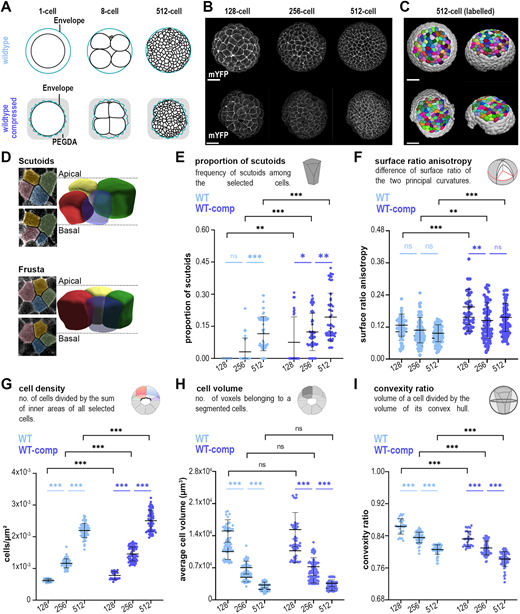2024-04-07 カリフォルニア大学サンディエゴ校(UCSD)
<関連情報>
- https://today.ucsd.edu/story/study-pinpoints-cellular-response-to-pressure-in-sea-star-embryos
- https://journals.biologists.com/dev/article/151/20/dev202362/347141/Local-and-global-changes-in-cell-density-induce
細胞密度の局所的・大域的変化が、増殖上皮における3次元充填の再編成を引き起こす Local and global changes in cell density induce reorganisation of 3D packing in a proliferating epithelium
Vanessa Barone,Antonio Tagua,Jesus Á. Andrés-San Román,Amro Hamdoun,Juan Garrido-García,Deirdre C. Lyons,Luis M. Escudero
Development Published:07 May 2024
DOI:https://doi.org/10.1242/dev.202362

ABSTRACT
Tissue morphogenesis is intimately linked to the changes in shape and organisation of individual cells. In curved epithelia, cells can intercalate along their own apicobasal axes, adopting a shape named ‘scutoid’ that allows energy minimization in the tissue. Although several geometric and biophysical factors have been associated with this 3D reorganisation, the dynamic changes underlying scutoid formation in 3D epithelial packing remain poorly understood. Here, we use live imaging of the sea star embryo coupled with deep learning-based segmentation to dissect the relative contributions of cell density, tissue compaction and cell proliferation on epithelial architecture. We find that tissue compaction, which naturally occurs in the embryo, is necessary for the appearance of scutoids. Physical compression experiments identify cell density as the factor promoting scutoid formation at a global level. Finally, the comparison of the developing embryo with computational models indicates that the increase in the proportion of scutoids is directly associated with cell divisions. Our results suggest that apico-basal intercalations appearing immediately after mitosis may help accommodate the new cells within the tissue. We propose that proliferation in a compact epithelium induces 3D cell rearrangements during development.


